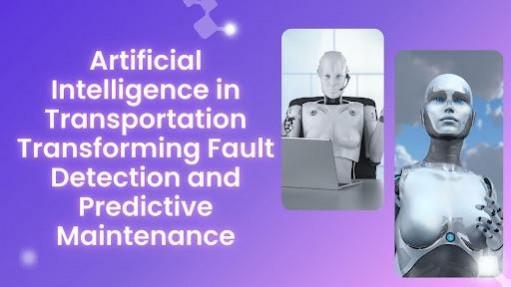
In this modern era, advancements in artificial intelligence (AI) are transforming transportation fault detection and predictive maintenance, improving reliability and safety. The increasing complexity of transportation systems demands smarter solutions that can detect potential failures before they cause disruptions. AI-driven technologies are revolutionizing traditional maintenance methods by integrating real-time data analysis with automated decision-making. In his research, Vijaya Kumar Guntumadugu explores AI-driven solutions that enhance real-time monitoring and pattern recognition. His study highlights AI's role in reducing downtime, preventing failures, and optimizing infrastructure efficiency.
Challenges in Transportation Fault Detection
Expanding transportation networks make safety and efficiency increasingly complex. Traditional fault detection relies on manual inspections and scheduled maintenance, often failing to prevent failures. Studies indicate that mechanical, electrical, and software-related issues account for over 85% of transportation faults, leading to hazards and financial losses. The need for more proactive and intelligent fault detection systems has never been greater. AI-driven predictive maintenance offers a solution by analyzing real-time data to identify potential issues before they escalate.
AI-Powered Predictive Maintenance
AI-driven predictive maintenance leverages machine learning to detect early signs of degradation. Deep learning techniques, such as Convolutional Neural Networks (CNNs) and Long Short-Term Memory (LSTM) networks, improve fault prediction accuracy by over 90%, enabling proactive interventions.
This approach has led to a 40% reduction in unscheduled downtime and a 30% decrease in maintenance costs. With real-time monitoring, transportation agencies can proactively schedule repairs, extending infrastructure lifespan and enhancing safety.
Pattern Recognition for Fault Detection
AI's ability to identify fault patterns enhances transportation safety. These models analyze sensor inputs such as vibration, temperature, and pressure deviations to detect hidden patterns linked to failures. By leveraging machine learning, AI can continuously refine its detection algorithms, improving accuracy over time. Integrating AI into monitoring systems improves fault detection accuracy by up to 85%, reducing reliance on reactive maintenance and preventing costly breakdowns.
Real-Time Monitoring for Enhanced Safety
AI-based monitoring tools process vast sensor data in real-time, identifying critical failures within seconds. AI-assisted monitoring reduces emergency response times by up to 60%, significantly improving safety and efficiency.
Edge computing enhances real-time detection by analyzing data at the source rather than relying on centralized processing, reducing latency and addressing faults before escalation.
AI in Autonomous Vehicles and Smart Infrastructure
Autonomous vehicles and smart transportation rely on AI-driven fault detection. Self-diagnostic capabilities continuously assess performance, detect anomalies, and execute corrective actions. AI algorithms in autonomous vehicles achieve detection success rates of over 99%, ensuring safer navigation.
Additionally, AI-powered traffic management systems analyze vehicle patterns, optimizing road safety while reducing accident rates.
Challenges in AI-Based Fault Detection
Integrating AI into legacy infrastructure requires investments in sensors, computing, and data management. Ensuring data quality across transportation modes is also a challenge.
Cybersecurity is another concern, requiring encryption, access controls, and AI-driven threat detection to secure critical transportation networks.
Future Trends in AI-Driven Transportation Safety
The future of AI in transportation will see advancements in federated learning, allowing multiple AI models to share insights without compromising privacy. Blockchain integration will enhance data security.
Hybrid machine learning models combining predictive analytics with deep reinforcement learning will improve decision-making in high-risk scenarios like autonomous vehicle navigation.
In conclusion, AI is revolutionizing transportation fault detection by enabling real-time monitoring, pattern recognition, and proactive decision-making. AI-powered solutions have enhanced system reliability, reducing downtime and improving safety. These technologies are not only improving maintenance efficiency but also contributing to cost savings and sustainability. As AI continues to evolve, its integration with IoT and cloud computing will further enhance predictive capabilities. As Vijaya Kumar Guntumadugu highlights, continued AI advancements will be key to optimizing infrastructure performance and ensuring the future of smart mobility.








![Sky is the limit: IndiGo is now tenth largest airline by capacity globally; growth indisputable [details]](https://data1.ibtimes.co.in/en/full/767455/sky-limit-indigo-now-tenth-largest-airline-by-capacity-globally-growth-indisputable-details.jpg?w=220&h=138)








